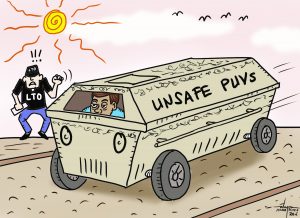By Herman M. Lagon
Complicated and deeply ingrained with historical grievances, cultural tensions, and geopolitical complexity is the Israel-Hamas war. With each side firmly rooted in its own stories of justice, survival, and resistance, the present circumstances mark decades of conflict. The difficulty is seeing an end to this war that respects Israel’s security needs as well as the rights of the Palestinian people—especially those who live under the terrible conditions of the Gaza Strip.
Everyone agrees that Israel has the right to defend itself, especially given the horrific October 7 attacks by Hamas. Characterized by indiscriminate killings, kidnappings, and terror, the violence has permanently scarred the Israeli psyche. The world community mostly agrees that no state should be expected to let such dangers to its people exist. However, the degree and strategy of Israel’s military reaction have spurred intense discussion not only abroad but also inside Israel itself.
Many nations identify Hamas, which has controlled Gaza since 2007, as a terrorist group. Its government is distinguished by a mix of armed opposition against Israel and strict control over the two million people living in Gaza. Often using civilian infrastructure for military purposes, Hamas’s approach puts the Palestinian population at significant risk during wars. This strategy, sometimes referred to as “human shielding,” complicates any military operation and almost makes it impossible to strike Hamas without resulting in civilian casualties.
With its military approach comprising ground operations and heavy airstrikes, Israel seeks to destroy Hamas’ military capacity. But among Palestinians, many of whom are civilians, this strategy has produced a shockingly high death toll. According to reports from Gaza, hundreds of people dead and many more displaced point to a severe humanitarian catastrophe. The suffering has been exacerbated by the destruction of hospitals, classrooms, and homes; this has attracted strong criticism from many directions.
According to the Israeli government, the long-term security of its people depends on the elimination of Hamas. Still, history reminds us soberingly that military triumphs do not always translate into long-lasting peace. The wars in Afghanistan and Iraq, for instance, highlight how limited military might is in reaching political stability. Israel’s own experience in Lebanon in 1982 also shows the possibility of strategic overreach to result in protracted conflict without obvious resolution.
One suggested route to bring peace is a more subdued military approach mixed with solid diplomatic initiatives. Under this approach, Israel would have to minimize civilian losses by concentrating on deliberate actions against the leaders and infrastructure of Hamas. Concurrently, foreign players such as the European Union and the United States could help Israel and more moderate Palestinian factions to communicate. Such talks would seek to solve more general problems aggravating the conflict, including the blockade of Gaza, Jerusalem’s status, and Palestinians’ right of return.
Still, there is doubt about whether Hamas, with its ideological dedication to destroy Israel, would ever follow such a procedure. The public comments and charter of the group have traditionally denied the legitimacy of the Israeli state; hence, compromising seems complicated. Any peace effort would also have to consider the complex political dynamics in Palestinian society, where Hamas receives support in Gaza partly because of the alleged inefficacy of the Palestinian Authority.
Solving the conflict also depends critically on attending to Gaza’s humanitarian needs. Although some humanitarian relief has been let into the enclave by the Israeli government, the general situation remains disastrous. By creating protected humanitarian corridors, the international community could be more involved in ensuring that aid gets to those most in need. This would call for cooperation between Israel and Hamas, the latter of which has been charged with diverting aid for military needs.
A ceasefire, brokered by foreign middlemen, could offer the required stop in the bloodshed. This would make it possible to provide essential services and evacuate people from conflict areas. However, ceasefires are sometimes brittle and can fall apart if either side sees them as a tactical delay instead of a means toward a more general settlement.
In the long term, any sustainable solution has to call for a reevaluation of the larger Israeli-Palestinian strife. Long supported by many in the international community, the two-state solution is still a workable framework, but years of mistrust, settlement growth, and changing political reality have degraded its viability. Still, a re-engagement with this vision, maybe with fresh ideas and assurances, could provide a road forward.
In the end, the Israel-Hamas conflict will probably call for military, diplomatic, and humanitarian initiatives to be taken in concert. Israel’s challenge is to neutralize a constant and deadly threat while maintaining the moral and legal standards controlling military operations. Particularly those living in Gaza, the Palestinians hope for a time when their rights will be respected, their lives will be safe, and their children will grow up free from continuous fear of violence.
Though it is not unreachable, the road to peace is full of challenges. It will call for bravery, moderation, and a readiness to interact with awkward facts on all sides. Watching as the conflict develops, one hopes for a fair and long-lasting solution that would provide security to Israelis and dignity to Palestinians.
***
Doc H fondly describes himself as a ”student of and for life” who, like many others, aspires to a life-giving and why-driven world grounded in social justice and the pursuit of happiness. His views do not necessarily reflect those of the institutions he is employed or connected with.


